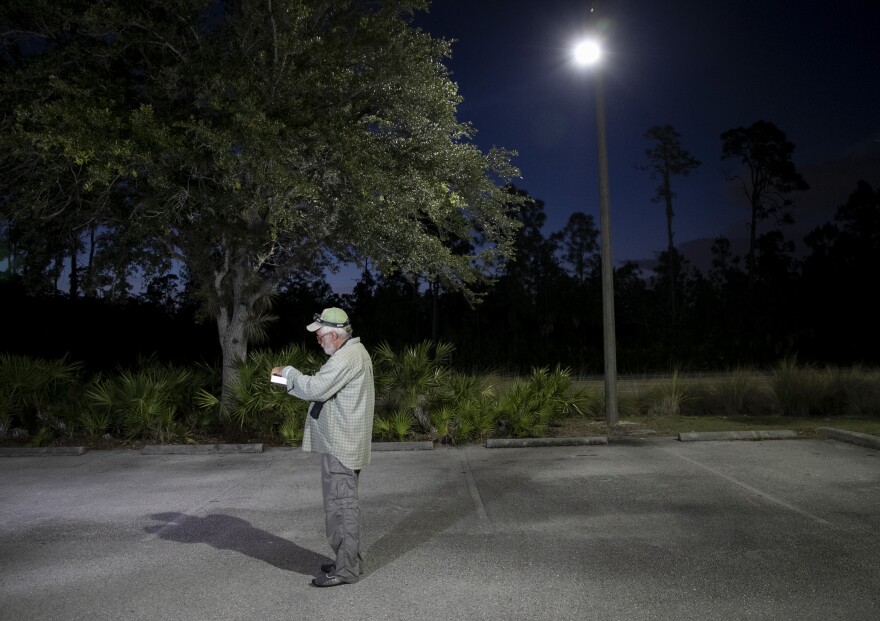For 40 years, wildlife biologists worldwide have been sounding the alarm on a mass extinction of amphibians. In response, several groups of scientists and volunteers have formed to chronicle exactly how many frogs remain — and for some of those groups, that’s done by listening.
FrogWatch USA is a national citizen science program collecting data on how abundant and diverse frog populations are across the United States. It's composed of volunteers and scientists alike, all going out to natural areas after dark to record just how many frogs are calling in the area.
The Southwest Florida route is led by Dr. Win Everham, professor of ecology and environmental studies at the Water School at Florida Gulf Coast University. He's been leading groups of volunteers into the marshes of Estero after sunset for several years now.
While on the route, they'll be listening for several different native frogs, including the sheep-esque "baa's" of the narrow-mouthed toad, the "peep-peep's" of the oak toad, and the call of the Southern cricket frog, which Everham describes as sounding like "a Newton's cradle, like steel balls clicking together."
These nighttime excursions aren’t just walks in the park — all of the volunteers are collecting information on approximately how many frogs live in the area.
The observations each have a routine: the coordinator starts a clock, volunteers walk around and listen for frog calls, and at time, they report back what they’ve heard. Everham says the amount of calls is tallied using a nationally based system.

“We’re following a protocol established by the USGS for the National Amphibian Monitoring Program. They established a subjective calling intensity. One is where there is only a few frogs calling, and their calls are not overlapping. So it’s not a single frog, it’s just an intensity of one. One calls over there, then one calls there, then another calls there,” Everham said.
READ MORE: A 'catastrophe' in the Lower Keys: Summer heatwave wipes out iconic elkhorn coral
The scale goes to 2 — where there are plenty of calls, but they can be told apart — and then to 3, which Everham describes.
“There are so many calling and there’s so much overlap, that at some point they refer to that as a chorus. Just a blur of noise.”
After all the sites have been visited, and all the tallies of frog calls have been made, the count is uploaded to a national database that anyone can access online.
So, what's the big deal bringing all these FrogWatchers out after dark?
According to Everham, frogs are a sentinel species — key indicators on the health of the environments they live in.
“If we drain the landscape to put humans on it, we are going to see frogs disappear. And if frogs disappear, it means we’re losing critical wetlands that have a whole suite of functions. So that’s this idea of frogs as an indicator, as a canary in the coal mine.”
Southwest Florida has experienced rapid development since the FrogWatch program began in 1998. More buildings and less green space generally means… fewer frogs.
However, Everham says that with restorative development techniques, it doesn’t necessarily have to be that way.
“We have data close to a decade, when this was all pasture. I think there’s more native frogs here than before the [Summit] church was built. When they built it they had to do a restoration, and they did a good job on the restoration.”
As Southwest Florida and the rest of the country continue to develop, the data collected by FrogWatch and other scientific surveys could be key for scientists in pushing for more restorative efforts by developers. But beyond just the data collected, Everham says many frog watchers come out for the sense of peace that it brings them.
“I think you connect to the land, in a different way. Going out at night and learning the sounds of the night is a little like that. You’re fitting yourself into a landscape.”
FrogWatch is open to anyone who’s interested, provided they're willing to stay up late.





















